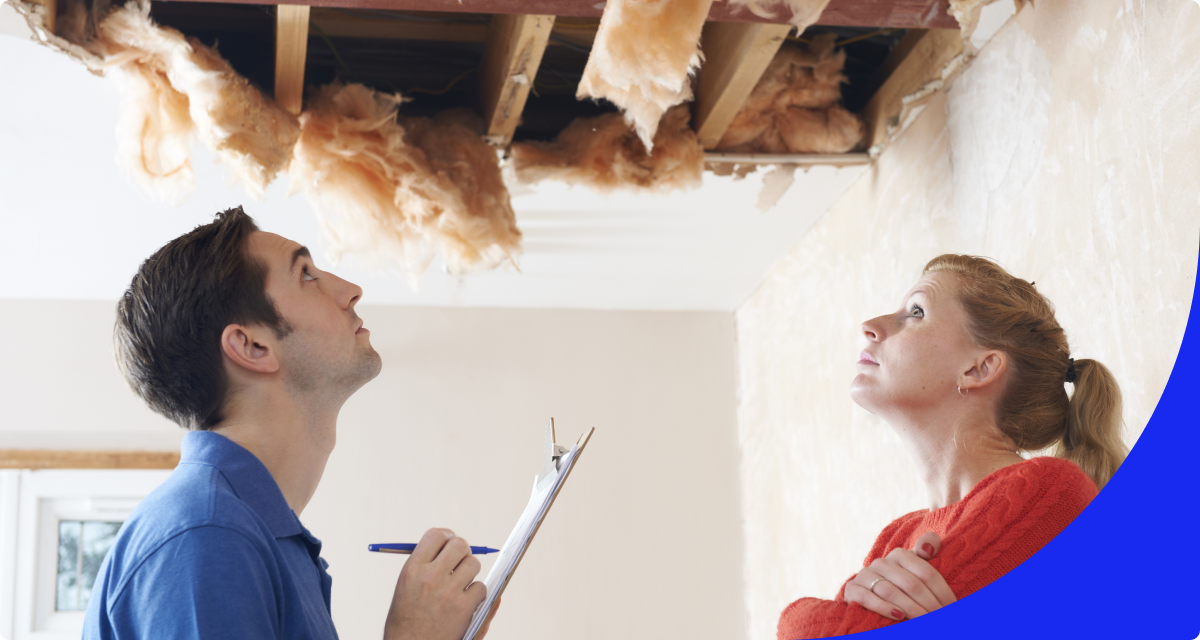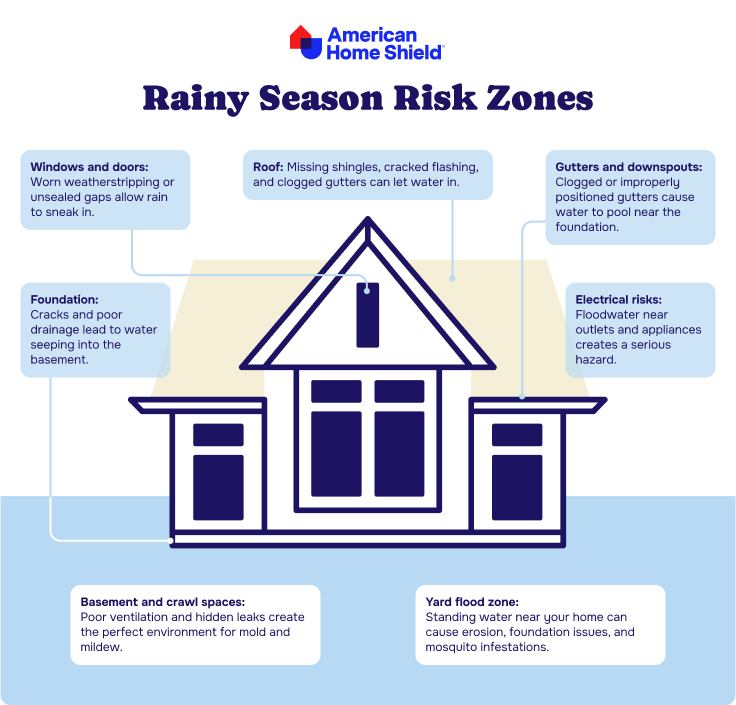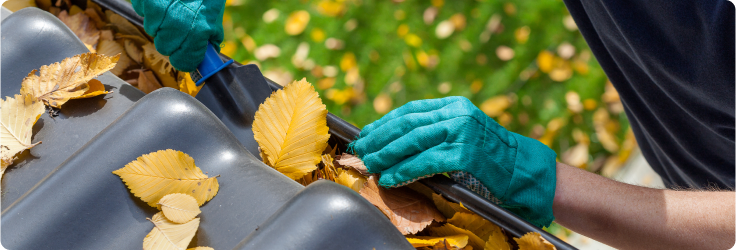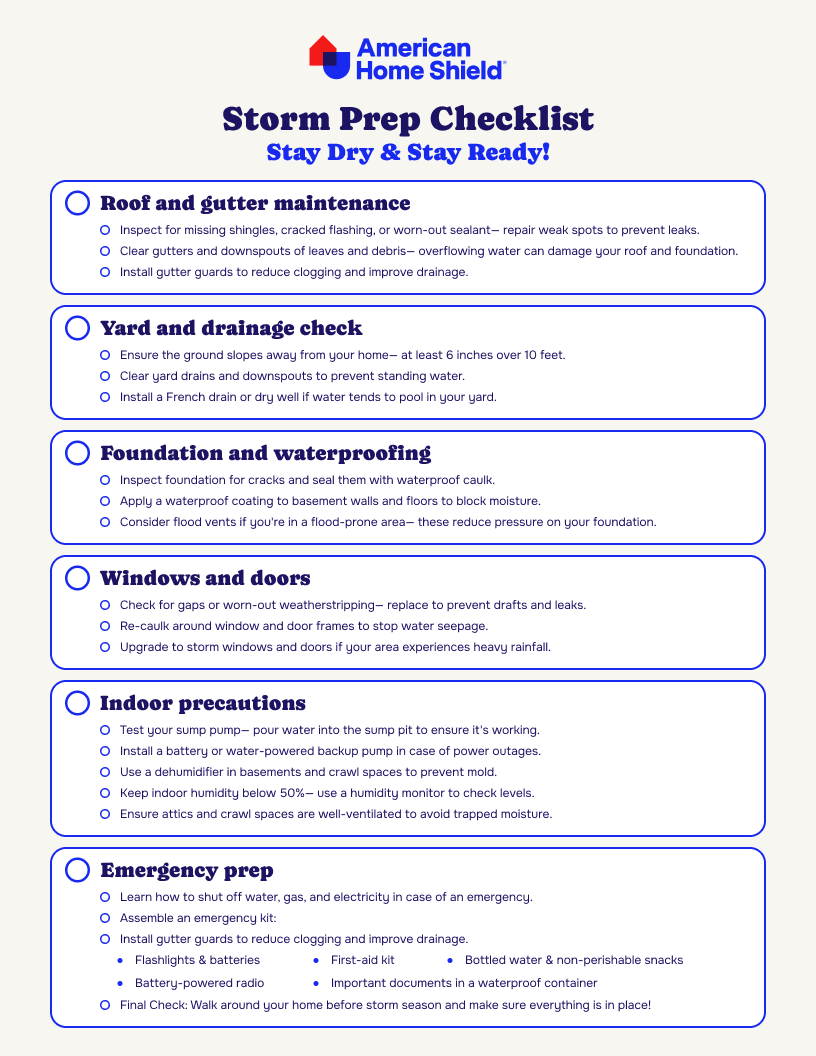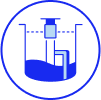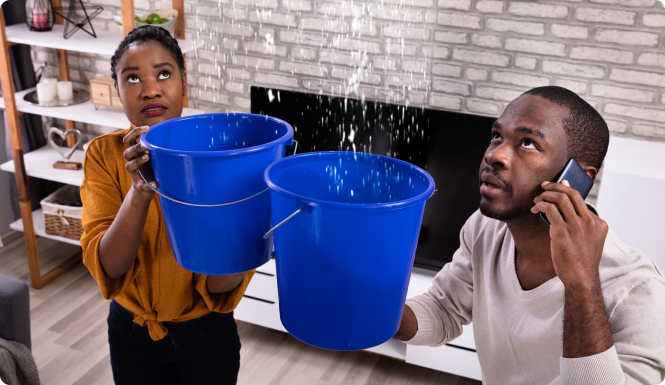Indoor Precautions
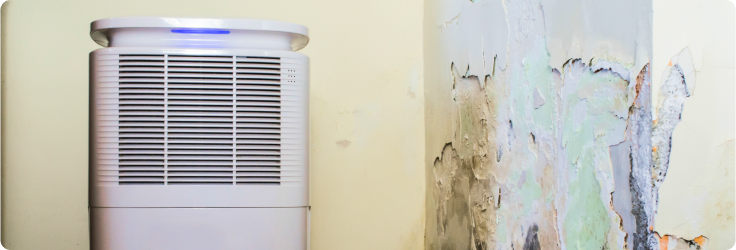
Even if you’ve waterproofed the outside, moisture can still creep in. These indoor steps will help keep your home dry and mold-free.
If your home has a history of leaks or moisture issues, consider installing a smart leak detection system. Some models can even send alerts to your phone if they detect excess moisture, helping you catch problems early.
Emergency planning:
Stay ready, stay dry
You can’t stop the rain, but you can make sure your home can handle it. A little planning now means fewer panicked moments later.
First, make sure you understand your unique risks for flooding, given your state, local surroundings, and property type. The Federal Emergency Management Agency (FEMA)’s flood map tool is a great resource for understanding the specific flood zones and risks you face. Check out their additional resources for pinpointing your property’s flood risk here.
Next, it’s essential to know how to shut off your home’s utilities— water, gas, and electricity— before you actually need to. House flooding and electricity are a dangerous combo, and you don’t want to be figuring out where your breaker box is while ankle-deep in water.
Next, put together an emergency kit. While it sounds like the behavior of a doomsday prepper, having essentials on hand can make a huge difference if you lose power or need to act fast. Stock up on flashlights, batteries, bottled water, a first-aid kit, a battery-powered radio, and a stash of non-perishable snacks.
What to do during heavy rains
When the skies open up, it’s time to go into home-defense mode. Start by monitoring problem areas— check your basement for any signs of water pooling, peek in the attic for drips, and scan ceilings and walls for any sudden stains or damp spots. If you see water coming in, act fast.
Keep an eye on your gutters and downspouts, too. If they’re overflowing or not draining properly, grab a raincoat and clear any visible blockages if it’s safe to do so. Proper drainage is the difference between rain staying outside where it belongs and seeping into places it shouldn’t.
If you notice a small leak, use waterproof tape or sealant as a temporary fix to keep water at bay until you can get proper repairs done. Just remember— these are
band-aids, not long-term solutions.
If things start looking bad— rising water, electrical issues, or structural damage—
don’t wait. Get out and get safe. Your house can be fixed; your safety comes first.
